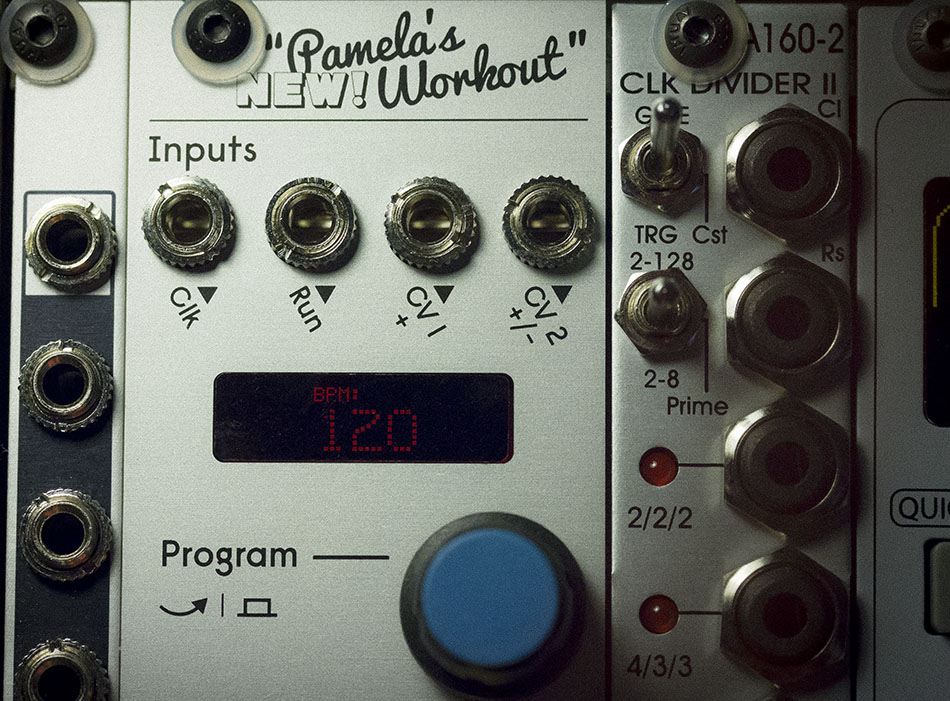
Music to the casual listener is mostly about rhythm, melody, and lyrical content. To someone learning how to make music one of the first lessons that becomes obviously apparent is that music is all about timing. Clocks, triggers, gates, pulses, PPQN (Pulses Per Quarter Note), randomness, steps, and modulation of all of these play a central role in how the Eurorack modular system is going to stay in sync, create and evolve rhythms, and move your piece forward, even when going in reverse.
I’ve chosen Pamela’s New Workout (PNW) from ALM as my master clock, I had tried the Arturia Beat Step Pro before deciding I wanted everything in the box. Once settled on a clocking device there is still an incredible depth of knowledge that will have to be acquired due to details regarding the division and multiplication of the signal if you will apply a Euclidean rhythm, or maybe you’ll choose to randomize its timing signature.
The PNW has eight outputs and each of them can be independently clocked. As the master clock, I patch out from this source to sync other modules that need to stay in time with each other. Even a random clock event should typically be in time with the rhythm of the piece that is being created.
Each of the eight outputs can in turn be divided or multiplied from within the PNW and by routing a clock signal to something like the Doepfer A-160-2 Clock Divider or the Animodule Tik-Tok Divider/Multiplier. If I want a random synced clock I have a couple of choices here too by taking a PNW output into the SSF Ultra Random Analogue or into the Makenoise Wogglebug, both specialize in random clock signals. I can take one of these external clock outputs into my Stillson Hammer sequencer and adjust the timing on a per track basis right within the Stillson, the same goes for many sequencers. In all, I currently have more than a few dozen devices that benefit from having a clock signal sent to them, while nearly everything else that follows these modules is the recipient of those perfectly or randomly clocked timings.
It’s daunting to try and think about the potential of which modules and sounds would benefit from particular timing signals. While I have more than a few passive signal multipliers also known as Mults (clock signals do not benefit from powered mults as CV signals do, as clocks send pulses that are not reliant on perfect voltage signals to convey their information accurately), I will still need to come to an understanding about which devices I want to send every manner of timing in order to achieve whatever it is that is stewing musically in my imagination.